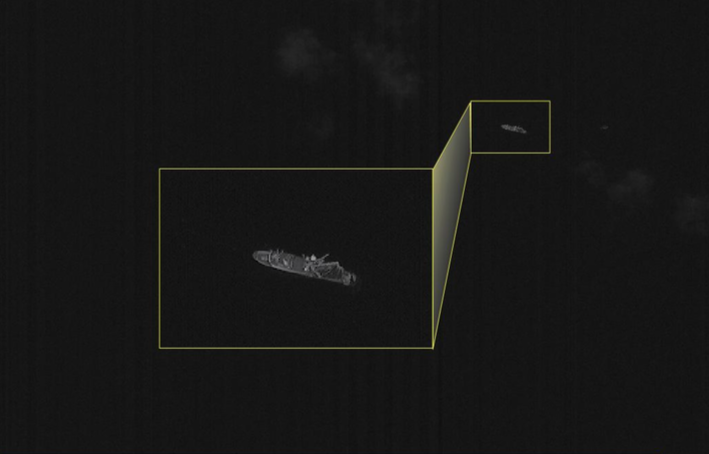ImageSat International (ISI) has been investing heavily in its development of Artificial Intelligence (AI) analytics in hopes of capitalizing on the abundance of new satellite-based imagery. In an interview with Via Satellite , ISI Business Development and Product Manager Ori Zeisel detailed the technology that drives the company’s maritime domain awareness service, Kingfisher.
copyright by www.satellitetoday.com
 According to Zeisel, ISI developed Kingfisher to address the range of issues related to tracking maritime assets , including Illegal, Unreported and Unregulated (IUU) fishing, foreign military activities at sea, and counter-terrorism and piracy. Specifically, the service works by shining a light on ships — known as non-cooperative vessels by NATO and other organizations — that would otherwise fly under the radar of maritime Automatic Identification System (AIS).
According to Zeisel, ISI developed Kingfisher to address the range of issues related to tracking maritime assets , including Illegal, Unreported and Unregulated (IUU) fishing, foreign military activities at sea, and counter-terrorism and piracy. Specifically, the service works by shining a light on ships — known as non-cooperative vessels by NATO and other organizations — that would otherwise fly under the radar of maritime Automatic Identification System (AIS).
Keeping an eye on the ocean
Until a few years ago, AIS was the only way to keep track of goings-on in the middle of the ocean, Zeisel said. “The problem with this solution is that only the good guys are using AIS,” he explained. “If you want to do illegal fishing … or nautical trafficking or even military activity, you do not use AIS because you do not want the other side to understand what you’re doing. Basically, all the criminal and military activity is being kept in the dark.” Ori Zeisel, ISI business development and product manager. To add another layer of visibility for its customers, ISI has turned to commercial satellite imagery, using algorithms run by AI to analyze the data collected from its disparate sources. “We start with analyzing open-source intelligence and AIS. By doing this, we can focus on hotspots [where] there is higher probability for detection of illegal activity,” Zeisel said.
Getting the right satellites
Once ISI has an idea of where to look, the company tasks satellites from commercial providers to image the hotspot and downloads the data to be inspected by a combination of human analysts and automatic AI detection. Tasking commercial satellites can sometimes be a time-intensive process, Zeisel said, in which case ISI reorients its own Eros B satellite to provide the necessary data. […]
read more – copyright by www.satellitetoday.com


ImageSat International (ISI) has been investing heavily in its development of Artificial Intelligence (AI) analytics in hopes of capitalizing on the abundance of new satellite-based imagery. In an interview with Via Satellite , ISI Business Development and Product Manager Ori Zeisel detailed the technology that drives the company’s maritime domain awareness service, Kingfisher.
copyright by www.satellitetoday.com
Keeping an eye on the ocean
Until a few years ago, AIS was the only way to keep track of goings-on in the middle of the ocean, Zeisel said. “The problem with this solution is that only the good guys are using AIS,” he explained. “If you want to do illegal fishing … or nautical trafficking or even military activity, you do not use AIS because you do not want the other side to understand what you’re doing. Basically, all the criminal and military activity is being kept in the dark.” Ori Zeisel, ISI business development and product manager. To add another layer of visibility for its customers, ISI has turned to commercial satellite imagery, using algorithms run by AI to analyze the data collected from its disparate sources. “We start with analyzing open-source intelligence and AIS. By doing this, we can focus on hotspots [where] there is higher probability for detection of illegal activity,” Zeisel said.
Getting the right satellites
Once ISI has an idea of where to look, the company tasks satellites from commercial providers to image the hotspot and downloads the data to be inspected by a combination of human analysts and automatic AI detection. Tasking commercial satellites can sometimes be a time-intensive process, Zeisel said, in which case ISI reorients its own Eros B satellite to provide the necessary data. […]
read more – copyright by www.satellitetoday.com
Share this: